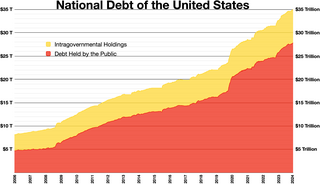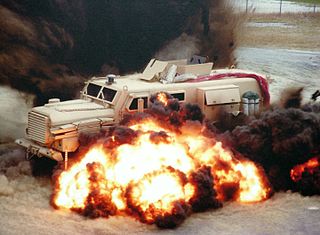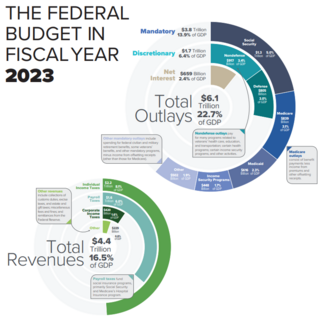
The High Mobility Multipurpose Wheeled Vehicle is a family of light, four-wheel drive, military trucks and utility vehicles produced by AM General. It has largely supplanted the roles previously performed by the original jeep, and others such as the Vietnam War-era M151 Jeep, the M561 "Gama Goat", their M718A1 and M792 ambulance versions, the Commercial Utility Cargo Vehicle, and other light trucks. Primarily used by the United States military, it is also used by numerous other countries and organizations and even in civilian adaptations. The Humvee saw widespread use in the Gulf War of 1991, where it navigated the desert terrain; this usage helped to inspire civilian Hummer versions. The vehicle's original unarmored design was later seen to be inadequate, and was found to be particularly vulnerable to improvised explosive devices in the Iraq War. The U.S. hastily up-armored select models and replaced front-line units with the MRAP. Under the Joint Light Tactical Vehicle (JLTV) program, in 2015 the U.S. Army selected the Oshkosh L-ATV to replace the vehicle in front-line U.S. military service.

The national debt of the United States is the total national debt owed by the federal government of the United States to Treasury security holders. The national debt at any point in time is the face value of the then-outstanding Treasury securities that have been issued by the Treasury and other federal agencies. The terms "national deficit" and "national surplus" usually refer to the federal government budget balance from year to year, not the cumulative amount of debt. In a deficit year the national debt increases as the government needs to borrow funds to finance the deficit, while in a surplus year the debt decreases as more money is received than spent, enabling the government to reduce the debt by buying back some Treasury securities. In general, government debt increases as a result of government spending and decreases from tax or other receipts, both of which fluctuate during the course of a fiscal year. There are two components of gross national debt:

The Stryker is a family of eight-wheeled armored fighting vehicles derived from the Canadian LAV III, itself derived from the Swiss Mowag Piranha. Stryker vehicles are produced by General Dynamics Land Systems-Canada (GDLS-C) for the United States Army in a plant in London, Ontario. It has four-wheel drive (8×4) and can be switched to all-wheel drive (8×8).
Investment in post-2003 Iraq refers to international efforts to rebuild the infrastructure of Iraq since the Iraq War in 2003. Along with the economic reform of Iraq, international projects have been implemented to repair and upgrade Iraqi water and sewage treatment plants, electricity production, hospitals, schools, housing, and transportation systems. Much of the work has been funded by the Iraq Relief and Reconstruction Fund, and the Coalition Provisional Authority.

Lawrence B. Lindsey is an American economist and author. He was director of the National Economic Council (2001–2002), and the assistant to the president on economic policy for George W. Bush. Lindsey previously served as a member of the Federal Reserve Board of Governors from 1991 to 1997, nominated to position by President George H. W. Bush. During his time with George W. Bush administration he played a leading role in formulating President Bush's $1.35 trillion tax cut plan, convincing candidate Bush that he needed an "insurance policy" against an economic downturn. He left the White House in December 2002 and was replaced by Stephen Friedman after a dispute over the projected cost of the Iraq War. Lindsey estimated the cost of the Iraq War could reach $200 billion, while Defense Secretary Donald Rumsfeld estimated that it would cost less than $50 billion. The overall cost of the Iraq War has been estimated by the Congressional Budget Office to be approximately $2.4 Trillion.

The military budget of the United States is the largest portion of the discretionary federal budget allocated to the Department of Defense (DoD), or more broadly, the portion of the budget that goes to any military-related expenditures. The military budget pays the salaries, training, and health care of uniformed and civilian personnel, maintains arms, equipment and facilities, funds operations, and develops and buys new items. The budget funds six branches of the US military: the Army, Navy, Marine Corps, Coast Guard, Air Force, and Space Force.

The U.S. rationale for the Iraq War has faced heavy criticism from an array of popular and official sources both inside and outside the United States. Putting this controversy aside, both proponents and opponents of the invasion have also criticized the prosecution of the war effort along a number of lines. Most significantly, critics have assailed the U.S. and its allies for not devoting enough troops to the mission, not adequately planning for post-invasion Iraq, and for permitting and perpetrating widespread human rights abuses. As the war has progressed, critics have also railed against the high human and financial costs.

Future Combat Systems (FCS) was the United States Army's principal modernization program from 2003 to early 2009. Formally launched in 2003, FCS was envisioned to create new brigades equipped with new manned and unmanned vehicles linked by an unprecedented fast and flexible battlefield network. The U.S. Army claimed it was their "most ambitious and far-reaching modernization" program since World War II. Between 1995 and 2009, $32 billion was expended on programs such as this, "with little to show for it".
Opposition to the War in Afghanistan (2001–2021) stems from numerous factors, including the view that the United States invasion of Afghanistan was illegal under international law and constituted an unjustified aggression, the view that the continued military presence constitutes a foreign military occupation, the view that the war does little to prevent terrorism but increases its likelihood, and views on the involvement of geo-political and corporate interests. Also giving rise to opposition to the war are civilian casualties, the cost to taxpayers, and the length of the war to date.

The United States budget comprises the spending and revenues of the U.S. federal government. The budget is the financial representation of the priorities of the government, reflecting historical debates and competing economic philosophies. The government primarily spends on healthcare, retirement, and defense programs. The non-partisan Congressional Budget Office provides extensive analysis of the budget and its economic effects. CBO estimated in February 2024 that Federal debt held by the public is projected to rise from 99 percent of GDP in 2024 to 116 percent in 2034 and would continue to grow if current laws generally remained unchanged. Over that period, the growth of interest costs and mandatory spending outpaces the growth of revenues and the economy, driving up debt. Those factors persist beyond 2034, pushing federal debt higher still, to 172 percent of GDP in 2054.
The budget of the United States government for fiscal year 2007 was produced through a budget process involving both the legislative and executive branches of the federal government. While the Congress has the constitutional "power of the purse", the President and his appointees play a major role in budget deliberations. Since 1976, the federal fiscal year has started on October 1 of each year.

The M1117 Guardian, also denoted Armored Security Vehicle (ASV), is an internal security vehicle based on the V-100 and V-150 Commando series of armored cars. It was developed in the late 1990s for service with the United States' Military Police Corps. The first prototypes appeared in February 1997 and serial production of the M1117 commenced between 1999 and early 2000.
The economic policy and legacy of the George W. Bush administration was characterized by significant income tax cuts in 2001 and 2003, the implementation of Medicare Part D in 2003, increased military spending for two wars, a housing bubble that contributed to the subprime mortgage crisis of 2007–2008, and the Great Recession that followed. Economic performance during the period was adversely affected by two recessions, in 2001 and 2007–2009.

Mine-Resistant Ambush Protected is a term for United States military light tactical vehicles produced as part of the MRAP program that are designed specifically to withstand improvised explosive device (IED) attacks and ambushes. The United States Department of Defense MRAP program began in 2007 as a response to the increased threat of IEDs during the Iraq War. From 2007 until 2012, the MRAP program deployed more than 12,000 vehicles in the Iraq War and War in Afghanistan.
Cost of Conflict is a tool which attempts to calculate the price of conflict to the human race. The idea is to examine this cost, not only in terms of the deaths and casualties and the economic costs borne by the people involved, but also the social, developmental, environmental and strategic costs of conflict. In most cases organizations measure and analyze the economic and broader development costs of conflict. While this conventional method of assessing the impact of conflict is fairly in-depth, it does not provide a comprehensive overview of a country or region embroiled in conflict. One of the earliest studies assessing the true cost of conflict on a variety of parameters was commissioned by Saferworld and compiled by Michael Cranna. Strategic Foresight Group has taken this science to a new level by developing a multi-disciplinary methodology, that has been applied to most parts of the world. A key benefit of using this tool is to encourage people to look at conflict in new ways and to widen public discussion of the subject, and to bring new insights to the debate on global security.

The United States federal budget consists of mandatory expenditures, discretionary spending for defense, Cabinet departments and agencies, and interest payments on debt. This is currently over half of U.S. government spending, the remainder coming from state and local governments.
Political debates about the United States federal budget discusses some of the more significant U.S. budgetary debates of the 21st century. These include the causes of debt increases, the impact of tax cuts, specific events such as the United States fiscal cliff, the effectiveness of stimulus, and the impact of the Great Recession, among others. The article explains how to analyze the U.S. budget as well as the competing economic schools of thought that support the budgetary positions of the major parties.

The Armored Multi-Purpose Vehicle (AMPV) is a U.S. Army program to replace the M113 armored personnel carrier and family of vehicles. AMPV is a sub-project of the Next Generation Combat Vehicle program.

The Costs of War Project is a nonpartisan research project based at the Watson Institute for International and Public Affairs at Brown University that seeks to document the direct and indirect human and financial costs of U.S. wars in Iraq and Afghanistan and related counterterrorism efforts. The project is the most extensive and comprehensive public accounting of the cost of post-September 11th U.S. military operations compiled to date.
The 20-year-long War in Afghanistan had a number of significant impacts on Afghan society.
















